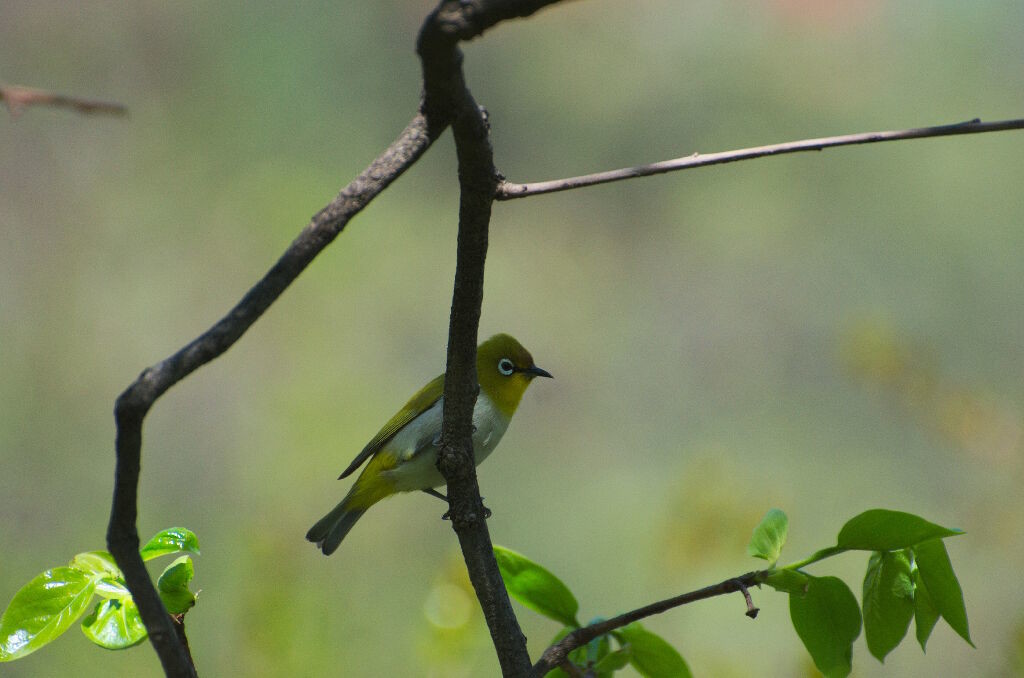
Zosterops palpebrosus (Oriental white eye)
Zosterops palpebrosus, commonly known as the Oriental White-eye, is a small, energetic bird that adds charm to the forests of the Great Himalayan National Park (GHNP). Recognized easily by its bright yellow-green plumage and distinctive white eye-ring, Zosterops palpebrosus is a favorite among birdwatchers visiting GHNP. This species plays an important role in the ecosystem, aiding in seed dispersal and pollination across the park’s mid- to lower-elevation zones.
Spotting a flock of Zosterops palpebrosus weaving swiftly through the forest canopy is often a highlight for nature enthusiasts exploring GHNP.
Habitat and Distribution in GHNP
Within GHNP, Zosterops palpebrosus inhabits moist broadleaf forests, orchards, and shrubby forest edges, usually between 1,000 and 2,500 meters elevation. It is often seen flitting through flowering trees, bamboo groves, and thick foliage near streams.
The species is highly social, commonly moving in small flocks, particularly outside the breeding season. During spring and summer, Zosterops palpebrosus becomes more territorial, often seen defending nesting areas hidden within dense shrubs and low trees.
Behavior and Diet
Zosterops palpebrosus primarily feeds on nectar, small insects, and fruits. Its feeding behavior involves swift movements between flowers and quick gleaning of insects from leaves. This adaptability allows it to exploit a range of food sources throughout the seasons.
The Oriental White-eye is highly vocal, producing a series of high-pitched, sweet chirps that maintain group cohesion. These sounds are often heard long before the tiny birds become visible among the foliage.
| Common name | Oriental White- Eye |
| Scientific name | Zosterops palpebrosus |
| Family | Psittacidae |
| Description | It is commonly found bird in GHNP, it has a white breast and belly, with a characteristic white eye-ring. Its color is a bright greenish yellow, with a conspicuous white ring round eye, and a slender, pointed curved bill. It feeds on the foliage of trees and bushes for insects and also subsists largely on flower nectar and fleshy pulps of fruits and berries. |
Conservation Importance
Although currently categorized as a species of Least Concern, Zosterops palpebrosus depends on healthy forest ecosystems like those protected within GHNP. Its presence is a strong indicator of rich floral diversity, as it relies on abundant flowering and fruiting plants.
By contributing to pollination and seed dispersal, Zosterops palpebrosus helps sustain the complex forest web that characterizes the Great Himalayan National Park’s biodiversity.



